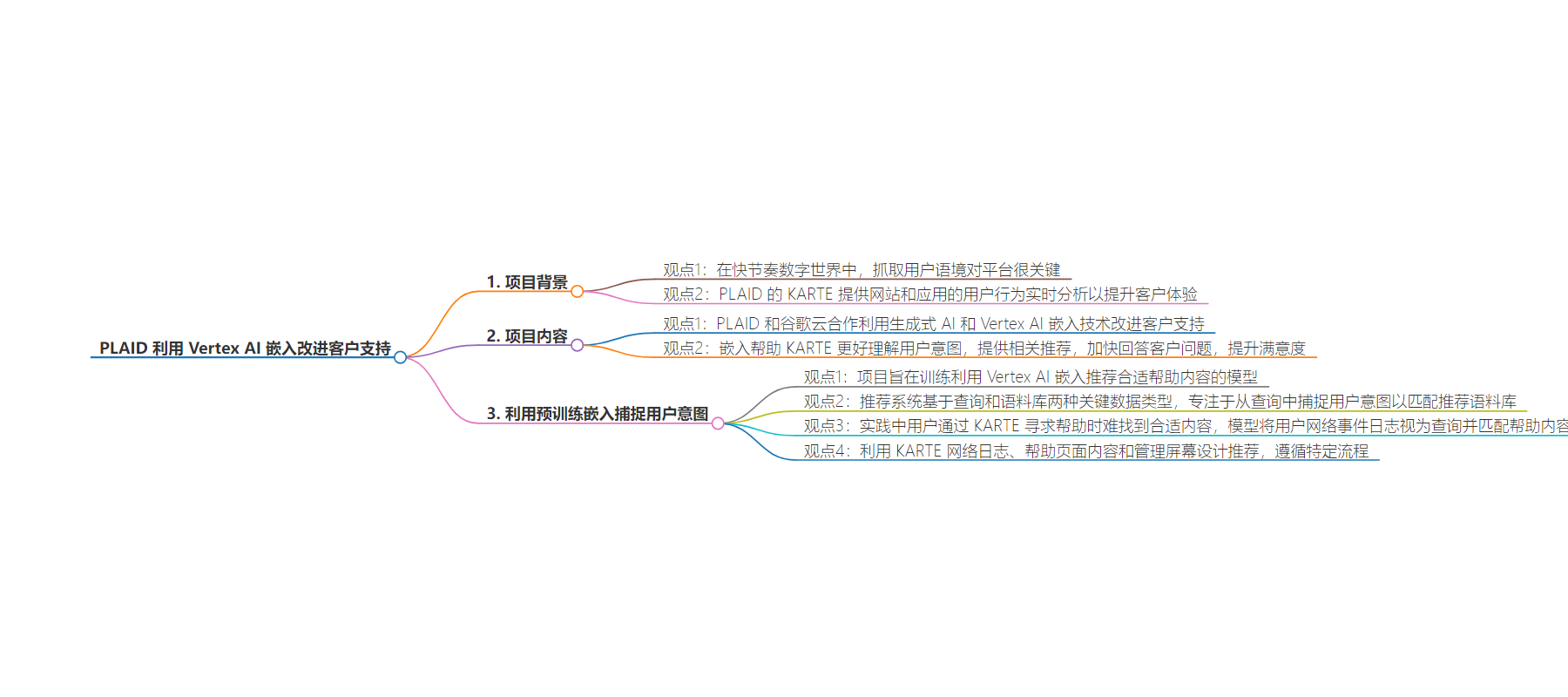包阅导读总结
1. 关键词:PLAID、Vertex AI 、Embeddings、Customer Support、User Intent
2. 总结:PLAID 利用 Vertex AI 嵌入技术改进客户支持,通过训练模型利用嵌入推荐合适的帮助内容,旨在更好地理解用户意图,以更快回答客户查询,提高满意度。
3. 主要内容:
– PLAID 的 KARTE 平台提供网站和应用的用户行为实时分析以增强客户体验。
– PLAID 与 Google Cloud 合作,在 Vertex AI 上利用生成式 AI 和嵌入技术改进 KARTE 客户支持。
– 项目通过利用 Vertex AI 上的嵌入训练推荐合适帮助内容的模型。
– 推荐系统基于查询和语料库两种关键数据类型,捕捉用户意图。
– 利用 KARTE 相关数据设计基于嵌入的推荐,解决用户在帮助页面找不到合适内容的问题。
思维导图:
文章来源:cloud.google.com
作者:Shuhei Kondo,Miki Katsuragi
发布时间:2024/8/1 0:00
语言:英文
总字数:956字
预计阅读时间:4分钟
评分:87分
标签:Vertex AI,嵌入技术,客户支持,生成式 AI,KARTE
以下为原文内容
本内容来源于用户推荐转载,旨在分享知识与观点,如有侵权请联系删除 联系邮箱 media@ilingban.com
In our fast-paced digital world, grasping user context is crucial for platforms like KARTE by PLAID, Inc., which offers real-time analytics on user behaviors on websites and applications to enhance the customer experience. Recently, PLAID and Google Cloud embarked on a project to leverage generative AI, including large language models (LLMs) and embedding techniques on Vertex AI, to improve KARTE’s customer support. Embeddings help KARTE better understand user intent, so that KARTE’s customer support feature can then provide relevant recommendations to answer customer queries faster and boost customer satisfaction.
Capturing user intent with pre-trained embeddings
Our project aims to train a model that recommends appropriate help content by leveraging embeddings on Vertex AI. This recommendation system operates on two key data types: Query and Corpus, focusing on capturing user intent from the Query to match against a Corpus of recommendations.
In practice, when users engage with web service content via KARTE and seek assistance on the KARTE help page, they often have trouble finding the right content. Our model interprets users’ web event logs as queries, matching them with helpful content that addresses their challenges within the context. To design our recommendations, we utilized KARTE web logs, content from KARTE help pages, and KARTE’s management screen. We designed recommendations using embeddings using the following flow:
